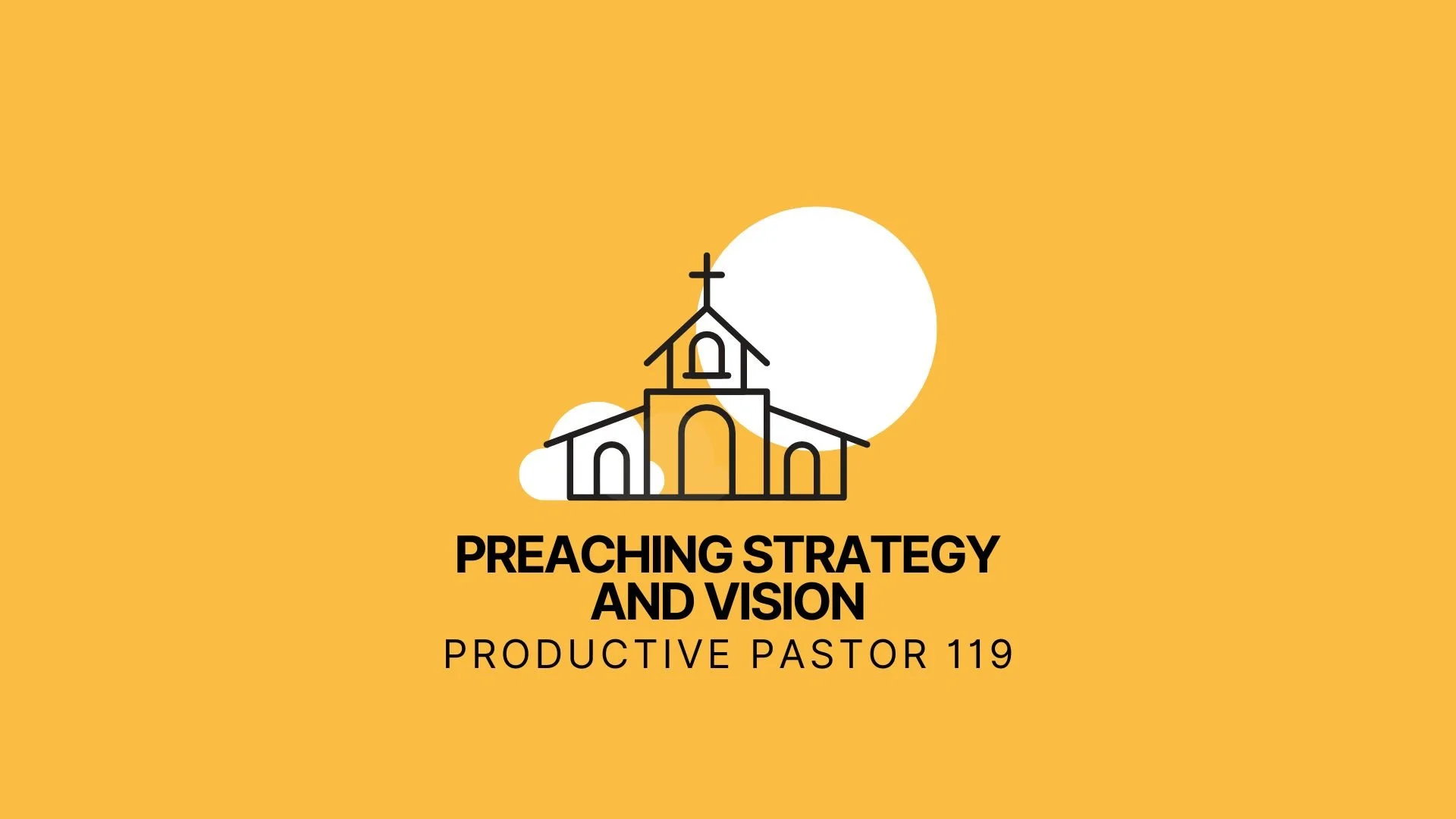Preaching Strategy and Vision: PP119
In our spiritual journey, we're called to be more than passive observers - we're invited to be active participants in God's vision for our world.
The sermon can occupy a unique place it what it means to both identify and encourage this action. Let’s jump into it in the lastest episode of Productive Pastor.
In this episode, I dive into how we can preach with vision and strategy, often involving building awareness and planning action. As pastors, regardless of the size or situation of our churches, we can harness the power of strategic preaching to serve and strengthen our congregations.
Key Takeaways:
Understanding Strategy in Preaching:
Strategy is about building awareness and planning action. It's a broad concept and one of the core pillars of our discussions on Productive Pastor.
Preaching should often involve a call to action or application, making it essential to consider the role your sermon plays in forwarding the church’s strategic goals.
Learning vs. Growth:
I propose a question to clarify the purpose of your sermon: "Is this to learn or to grow?"
Learning is about imparting new knowledge, while growth is about inspiring and facilitating spiritual and church development.
Utilizing Models for Preaching:
Peter Attia’s model of "Objective, Strategy, Tactics" can be applied to sermons:
Objective: The ultimate vision or mission.
Strategy: How to achieve that vision.
Tactics: Specific actions to implement the strategy.
Creating Language Worlds:
Referencing Alan Roxburgh’s concept, language worlds help define the collective mindset and cultural environment within which we operate.
Preaching with vision involves inviting congregants into a new language world aligned with the Kingdom of God.
Examples of Vision-Oriented Sermons:
Vision sermons are ideal at the start of the year or during stewardship. They can be part of a series or standalone messages tailored to the current needs of your church.
Recurring Vision Statements:
Utilize recurring statements to reinforce your church’s vision. People start recognizing these key phrases, which reinforces strategic points in your preaching.
The Four Jesus Assumptions:
These assumptions help guide congregational understanding and participation in mission-oriented activities:
Jesus is here.
Jesus is doing things.
Jesus invites us to do those things with him.
Our fulfillment comes when we join Jesus in his work.
Resources:
Books Mentioned:
"Center Church" by Tim Keller
"Outlive" by Peter Attia
"Joining God in the Great Unraveling" by Alan Roxburgh
"Memories, Hopes, and Conversations" by Mark Lyle Branson
"Becoming a Missionary Church" by Goheen and Sheridan
Curious about developing your own journey of healthy ministry through strategic productivity? My course Becoming Productive is designed just around that!
You can grab it for $49 here.
The 5/15 Email Course
Productive Pastor on iTunes
Productive Pastor on Spotify
Chad on YouTube
Productive Pastor Email List
